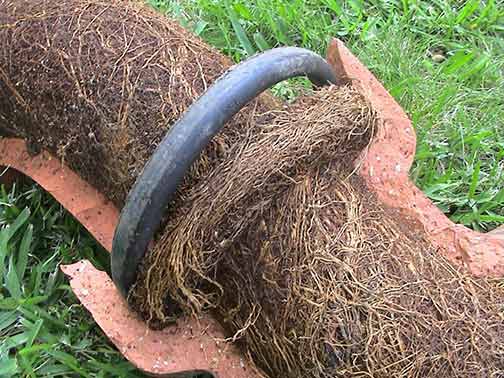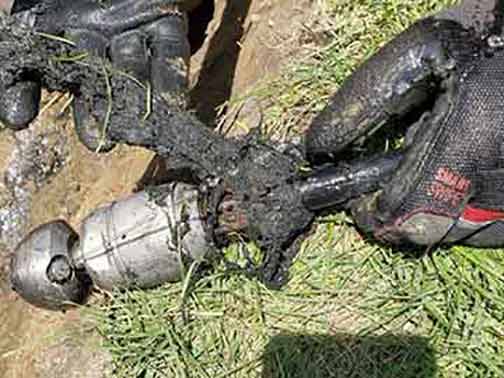
Tree root invasion is a common problem that occurs in sewer lines all over the world. As trees grow and develop, their root systems naturally search for water and nutrients. It’s inevitable that sewer lines are an ideal source of water and nutrients, and therefore tree roots invade and damage pipes installed underground.
The consequences of tree root intrusion into sewer pipes can be catastrophic and costly. Left unchecked, these invading roots can lead to blockage, leading to sewer backups, pipe corrosion, and ultimately pipe failure. The impact of tree root intrusion into sewer pipes is discussed in this article and preventive measures and remediation methods that can limit the damage caused by this process are offered.
Understanding the Impact of Tree Root Intrusion
Tree roots are not inanimate objects digging for water in the earth. They are dynamic and persistent, with the capability of inflicting heavy pressure when they encounter a barrier like sewer pipes. The intrusion is generally at pipe joints or cracks, where tree roots may be able to penetrate and enter the sewer pipes.
As they have entered the sewer pipes, the tree roots will continue to grow and penetrate, exerting pressure on the walls of the pipes. This may lead to pipe deformation and ultimately blockages. As the tree roots thicken, they also become clogged with grease, trash, and other waste products, adding to the issue of blockages.
Sewer line clogging results in sewage overflows into homes or the environment. The contaminated water can cause property damage and health hazards due to the existence of bacteria, viruses, and other disease-causing microorganisms. Moreover, the increased force from root intrusion also leads to pipe cracking and breaking, which may require costly repairs or even complete replacement of the sewer line.
Prevention Techniques
Prevention is always the best defense against tree root intrusion into sewer lines. Certain measures can be taken to minimize the risk and avoid invasive tree root damage:
Proper tree species selection: Select tree species with less invasive root systems, such as maple or dogwood. Never plant species with a high root invasion potential, such as willow or poplar.
Maintaining proper distances: Leave a proper distance between sewer pipes and trees during planting. Take professional advice from arborists or landscape architects and establish the right distance based on the species of tree and the pipe material.
Root barrier installation: Physical root barrier installation, such as installing a root-resistant sheeting or a certain geotextile root barrier, can be accomplished in order to create a barrier between trees and sewer pipes. These barriers prevent tree roots from growing into sewer lines and steer them towards less critical areas for pipe well-being.
Regular inspections: Have regular camera inspections of your sewer line performed through the use of modern technologies. Early root intrusion detection enables immediate remediation and also helps in avoiding massive damage.

Remediation Techniques
When tree root intrusion is detected, a combination of techniques can be used to mitigate the damage and restore the sewer lines:
Sewer Rodding: Using specialized cutting tools, tree roots can be mechanically removed from the pipe walls. The technique known as sewer rodding helps to clear blockages and restore the flow of wastewater. However, it is a temporary solution as the roots can regrow and cause further damage.
Hydro jetting: Hydro jetting involves the use of high-pressure water to dislodge and flush out tree roots from the pipes. This technique not only removes the roots but also cleans the pipe walls, reducing the chances of new root intrusion. Regular hydro jetting service can be an effective preventive measure as well.
Chemical treatments: Applying chemical treatments, such as foaming root killers or herbicides, can inhibit root growth and reduce the likelihood of intrusion. However, caution must be exercised when using chemicals near sewer lines to prevent damage to the environment and public health.
Pipe relining and replacement: In severe cases where the pipes are extensively damaged, relining or complete replacement may be necessary. Pipe relining involves inserting a new liner into the existing pipe, creating a seamless and root-resistant surface. Complete replacement is a more invasive but long-lasting solution.
To Sum It Up
Root intrusions of trees pose a serious threat to the function and integrity of sewer lines. The impact of such intruding roots has the potential to cause clogging, weakening of pipes, and costly repairs. However, through proper prevention methods and regular inspections, tree root intrusion can be prevented. Where intrusion exists, a combination of remediation techniques can effectively mitigate the damage and bring sewer lines to their optimal state. With knowledge of tree root intrusion’s impact and the proper application of prevention and remediation techniques, residents and municipalities can ensure the longevity and efficiency of their sewer systems.

